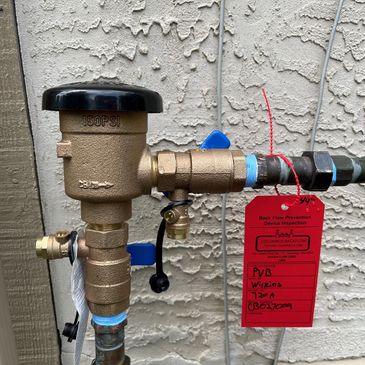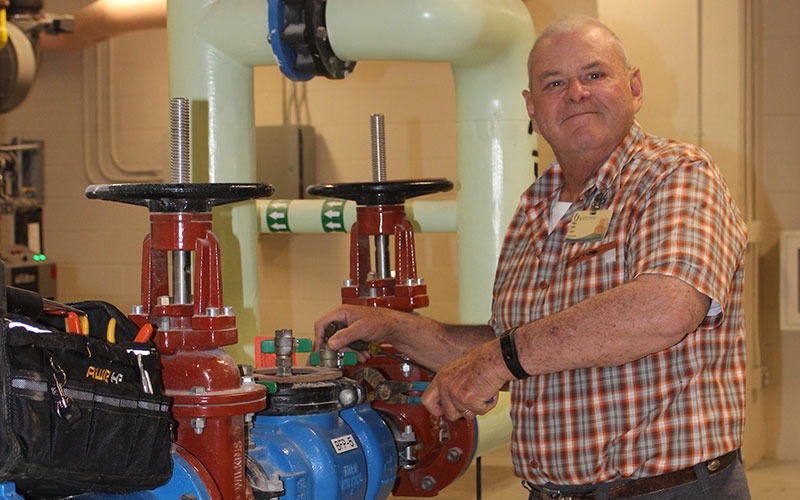Do I Need to Have a Backflow Test for My Water
Do I Need to Have a Backflow Test for My Water
Blog Article
We've noticed this great article pertaining to Backflow Testing directly below on the web and felt it made perfect sense to share it with you here.

Yes, you need to backflow test your house's supply of water to guarantee that the water is free of contaminants as well as unsafe levels of chemicals. You need to not try to do heartburn testing on your own because of the equipment required and space for error. We recommend that you call a professional plumber every couple of years to check your water.
What is Backflow?
In short, backflow is when water moves upwards-- the opposite direction in the plumbing system. This is additionally called "backpressure." When the water moves in this instructions, it can combine with dangerous toxic substances and also pose a threat.
What Causes Backflow?
A typical cause of backflow is a loss of water stress that triggers the water to siphon back into the water supply. An example is cleaning out a paint pail using a hose pipe. You load the paint container up with water, leaving the tube in the container. After a long time, there is a loss in water stress and also the tube starts to suck the water back right into the supply of water. As you can envision, there are now chemicals from the paint that are entering the supply of water, potentially presenting a threat. Many people are not also aware of backflow screening, however there are many factors why it's so vital.
Backflow Screening is Required by Law in Specific Cities
Relying on where you live, you could actually be needed by law to backflow examination your law. As an example, Iowa City maintains a document of all residential or commercial properties offered by the city's water. The city needs that certain "high-hazard" facilities undergo backflow screening. In many cases, residential properties such as residences and also apartment are impacted.
You Can Stop Heartburn
Hazardous heartburn is conveniently avoidable if you have a professional plumber set up a heartburn tool. The plumber will certainly also test for backflow and also establish if there is an energetic danger. The primary purpose of a backflow gadget is to stop water from streaming in reverse into your water supply. Plumbers set up the tool on the pipes in your house to guarantee that the water just flows in the appropriate direction.
Backflow Can Influence Both You as well as Your City
Several cities establish backflow guidelines due to the fact that unsafe backflow can affect the general public water supply in addition to a solitary building. Thankfully, modern cities have backflow devices in position that secure the water supply that originates from most residences and also business homes. The genuine danger comes from irrigation systems, which can hurt the water with hazardous fertilizers, manure, and various other chemicals.
Call a Plumber to Check for Heartburn Prior To It is Too Late
While it could appear grim, polluted water can cause horrible bacterial and also viral infections that are tough to treat. If there are any unsafe chemical degrees, a plumbing firm can swiftly test your residence's water to figure out. The little financial investment is if you can stay clear of the torment that comes from consuming contaminated water. As well as if you do uncover that your water has high levels of contaminants, a plumber can conveniently set up a backflow avoidance device.
Yes, you need to backflow test your home's water supply to ensure that the water is totally free of toxins and also unsafe levels of chemicals. A regular reason of heartburn is a loss of water stress that creates the water to siphon back into the water supply. After some time, there is a loss in water pressure as well as the hose starts to draw the water back into the water supply. The primary purpose of a backflow tool is to avoid water from streaming backwards right into your water supply. Many cities develop heartburn guidelines since harmful backflow can impact the public water supply in enhancement to a single structure.
WHY DOES BACKFLOW TESTING NEED TO BE DONE EVERY YEAR
What Is Backflow?
Toxic gas backing up into a building is one example of potential backflow issues, but backflow can occur in many other ways.
Backflow is generally referred to as the reversal of a liquid or gas in a plumbing system.
Most issues for the public occur with backflow resulting in contaminated drinking water. If you look up backflow issues online you’ll probably find references to “potable” water. That means drinking water.
There have been backflow issues in the past with drinking water. Chemicals, sewage and other contaminants have found their way into drinking water causing health issues for those that count on the fresh water.
What Causes Backflow?
In a residence or commercial building water generally flows one way. This normal flow is usually driven by consistent pressure in the water and waste system.
Anything that changes the normal pressure in the system can lead to backflow.
Fire hydrant use or malfunction can reverse the normal pressure in the system on a city line, but backflow can occur in a number of different ways.
Sometimes backpressure might be caused by someone using a garden hose and submerging the end of the hose in a pool of liquid. If pressure is lost the flow could reverse and contaminants could be released into the drinking water.
Anytime there is a connection between contaminants and the drinking water there is potential for a backflow issue. Sometimes these connections are not immediately obvious like the garden hose connecting to a building’s drinking water supply.
Backflow Regulations
The Environmental Protection Agency (EPA) provides guidelines and regulations for state and local governments regarding backflow. State and local governments also have their own guidelines and regulations for backflow prevention.
Arizona has its own backflow regulations.
Due to issues with backflow in the past, regulations require backflow preventer devices to be used in nearly all residential and commercial buildings.
A backflow preventer is a device that prevents backflow as cross-connection points where potential backflow issues may occur.
While backflow is not a common occurrence, preventers are in place to make sure there is no contamination should something malfunction or go wrong with a building’s water supply.

I ran across that blog post on Is backflow testing necessary? when doing a lookup on the search engines. Make sure you take a moment to share this write-up if you appreciated it. I appreciate reading our article about Backflow Prevention.
Course Detail Report this page